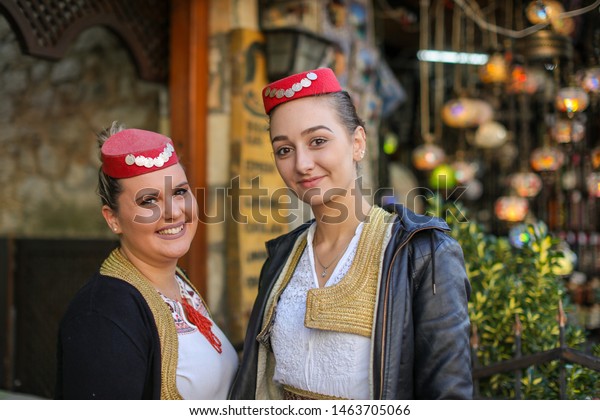Bosnian Women
Trump Escalates War on Government Watchdogs
The specific challenges that women face after the bloodshed has stopped is a complete different story. In my very own nation, Bosnia and Herzegovina, no woman was among the many negotiators, mediators, or signatories of the internationally brokered Dayton agreement in 1995. After Bosnian Muslim men went MIA during wartime, in order to get divorces, their wives became Hanbali or Shafi’i instead of Hanafi, since Hanafis needed to delay a very very long time before divorce might be allowed from an MIA husband. According to the expertise of 1000’s of men who found happiness with a Bosnian bride, the best approach to search for women for marriage from Bosnia is to sign up for a number of worldwide relationship websites.
For Cyrus Vance and Lord Owen have seen to it that in a brand new federal state the world round Gacko shall be awarded to her tormentors, the Serbs. As phrase of the killings spread to the close by villages of Basici, Drugovici and Bahori, thousands of Muslim men and women fled in terror to the forests of the Zelengora mountains to the north. Another group of more than 200 women were rescued by the International Red Cross as they have been being driven to a mass grave.

To some extent, the restricted scholarship around gender and the Bosnian peace course of is reflective of a restricted feminine presence. It additionally reflects that negotiators paid, at best, minimal attention to gender concerns and the potential significance of feminine participation. Those talking publicly concerning the peace course of recommend that it was “a parade of one man after another” (Ljujić-Mijatović in Hunt 2004, 143). According to Björn Lyrwall, a Swedish advisor in the course of the Dayton negotiations, negotiators did not focus on gender considerations because the main focus was ending armed hostilities (cited in Grebäck and Zillén 2003, 3). Moreover, in the course of the peace course of itself, women didn’t manage as women to be present or demand that their concerns were heard.
Bosnian Muslim women fought within the defense of the fortress of Būzin (Büzin). The women of the Bosnians were deemed to be militaristic according to non-Ottoman information of the struggle between the Ottomans and Austrians they usually performed a job within the Bosnian success in battle towards the Austrian attackers. Yeni Pazar, Izvornik, Östroviç-i âtıok, Çetin, Būzin, Gradişka, and Banaluka were struck by the Austrians. A French account described the bravery in battle of Bosnian Muslim women who fought in the struggle.
If we enable apparent absence to manifest as a presence, then we uncover one thing meaningful on the web site of the lacking. Although we can generate gender data by taking a look at seen women, specializing in visibility avoids sticky questions on why the omission of girls occurs and concerning the enduring effects bosnia and herzegovina women of missing women. In this case, we miss the opportunity to consider what the obvious absence of women does to our understanding of the Bosnian peace course of. For instance, we are able to see the shadows of exclusion haunting feminist activism within the present. Or, our gaze could be drawn towards the practices of colonial, racial, and ethnic masculinity that shape the outcomes of peace processes.
Fundamentally, the political structure that was set up by the Dayton Peace Agreement createdarguably “the world’s most complex system of government,” because the Guardian put it. It created two entities, Republika Srpska (populated mostly by Serbs) and the Federation of Bosnia and Herzegovina (with principally Bosniaks and Croats).
Bosnian women battle to return feminine family members, children from Syria
In explicit, the disastrous penalties of the 1990s civil war retrenched traditional gender norms and led to a significant backsliding in women’s rights. Indeed, the ‘social values’ concerning gender that seem prevalent right now would have appeared regressive prior to the struggle. Women clustered in areas of low-paid employment such as low-expert white-collar work and repair, and in economically deprived industrial sectors like textilesand a particularly low share of ladies held top managerial or political positions. In 1980, more women had been employed in socialist Eastern Europe than in Western Europe.Workplaces similar to factories have been the suppliers of housing, childcare, healthcare, food, and social providers normally, in addition to serving as a cultural hub and house of friendship and community. Women’s rights in Yugoslavia made immense strides after WWII, including gaining complete authorized equality and the best to vote.
Remote studying classes with Nepal’s women MPs
For this cause, as soon as in the area, I altered my analysis focus to explore constitutional reform and the Bosnia & Syria initiatives. Retrospectively, upon transcribing the interviews, I found that female absence from the Bosnian peace process resurfaced in the course of some of these interviews, suggesting that the specter of lacking women haunts feminist and girls’s organizing today.
This temporal complexity of haunting, the place past, current, and future intermingle, reveals how ghosts linger productively lengthy after the ink is dry on the settlement. I develop these arguments by analyzing the 1991–1995 Bosnian peace course of, usually described as gender blind and failing to incorporate women (Grebäck and Zillén 2003, three; Lithander 2000, 12; Bavčić and Delić 2014, one hundred fifty; Hunt 2004, xv–xxiv). I contend that feminine our bodies in the Bosnian peace process solely seem like invisible—until their ghostly presence impinges upon us. By following two spectral websites of “lacking women”—in memoirs of the peace course of and inside contemporary activism—I trace the ghostly form described by absence. Paying consideration to these absences can tell a big story in regards to the peace course of.

For instance, students search to quantify the consequences of feminine presence (Aroussi 2015, 192–202; Bell and O’Rourke 2010, 949–58), follow feminist activists and girls performing for women (Waylen 2014, 495–ninety eight; Anderlini 2007, 53–ninety two), or ask questions about women in so-referred to as backstage positions (Aharoni 2011). Much policy scholarship round women in peace processes focuses on developing an proof base to show how “effective” feminine presence is (for example, see Coomaraswamy 2015, 40–44; UN Security Council 2010, 37, 39). Put simply, activists are pushing for change in up to date contexts, and attempts to remodel these political processes mean they hit a brick wall, disturbing ghosts. In this case, the brick wall consists of structural blockages to feminist involvement in elite political processes, or the dearth of interest for their arguments outside of feminist circles. The resurfacing of ghosts prompts crucial consciousness about patterns of exclusion prior to now.
